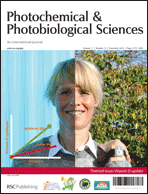The last issue of the year for Photochemical & Photobiological Sciences is now published online. This issue includes a collection of articles looking at the issues surrounding potential increase of vitamin D status to provide better health. Read the Editorial by Guest Editor Vivienne Reeve here.

Read the full article for free for 6 weeks!
Increase in serum 25-hydroxyvitamin-D3 in humans after solar exposure under natural conditions compared to artificial UVB exposure of hands and face, Pameli Datta, Morten Karsten Bogh, Peter Olsen, Pia Eriksen, Anne Vibeke Schmedes, Mette Marie-Louise Grage, Peter Alshede Philipsen and Hans Christian Wulf, Photochem. Photobiol. Sci., 2012, 11, 1817-1824
You may also be interested to read these articles on vitamin D – free to access for 3 weeks:
Serum 25-hydroxyvitamin-D responses to multiple UV exposures from solaria: inferences for exposure to sunlight, Richard McKenzie, Robert Scragg, Ben Liley, Paul Johnston, John Wishart, Alistair Stewart and Roshani Prematunga, Photochem. Photobiol. Sci., 2012, 11, 1174-1185
A computational model for previtamin D3 production in skin, Merve Meinhardt-Wollweber and Ronald Krebs, Photochem. Photobiol. Sci., 2012, 11, 731-737
Vitamin D-fence, Katie M. Dixon, Vanessa B. Sequeira, Aaron J. Camp and Rebecca S. Mason, Photochem. Photobiol. Sci., 2010, 9, 564-570
Is the action spectrum for the UV-induced production of previtamin D3 in human skin correct?, Mary Norval, Lars Olof Björn and Frank R. de Gruijl, Photochem. Photobiol. Sci., 2010, 9, 11-17
You can keep up to date with the latest developments from Photochemical & Photobiological Sciences by signing up for free table of contents alerts.










